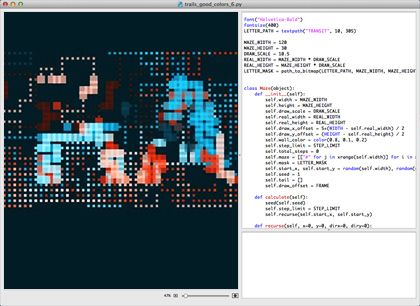

It also has some pretty severe limitations: no user-defined blocks, no return values, no file interaction (so no high scores), no network interaction, no dynamic object creation, the program cannot draw on sprites (only on the background), no string variables or any real string handling.
#2d objects using nodebox 3 download
My seven-year-old can download someone else’s project and generally is able to read it to see what is going on, so it is good for building basic programming literacy. Scratch is great for learning and for sharing. They can also share their creations on the web, projects get automatically converted to Java applets when shared on the Scratch website, and the kids can vote for and comment on each others projects. Scratch allows kids to program without worrying about the syntax, so they can drag blocks together, use the built-in drawing program to create sprites or import images from the library that comes with the environment. The best language for getting kids interested and up to speed quickly that I’ve found is Scratch, which is a visual, drag-and-drop programming language for games and animations based on Squeak Smalltalk. Let’s look at both of these.įor languages other than Python, there are some really good choices.

Two, find (or make) ways for Python to be more approachable. One, let them use other languages than Python. So I see two approaches to this problem, if it is a problem. Lately my kids have been very interested in programming, and I’ve found that Python doesn’t come as easily to 6-11 year olds as it does to adult programmers. Python has a well-earned reputation for being easy to use and to learn, at least for people who have learned programming in other languages first.


 0 kommentar(er)
0 kommentar(er)
